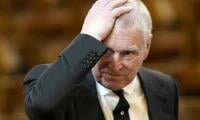Deficit rises to $18 billion: Current account deficit widens to 5.7 percent of GDP in FY2018
Pakistan’s current account deficit widened to $18 billion or 5.7 percent of gross domestic product during the last fiscal year of 2017/18, putting rupee at risk of a further big fall and fanning fears about the sustainability of the economic growth.
KARACHI: Pakistan’s current account deficit widened to $18 billion or 5.7 percent of gross domestic product during the last fiscal year of 2017/18, putting rupee at risk of a further big fall and fanning fears about the sustainability of the economic growth.
The State Bank of Pakistan (SBP) said the current account deficit amounted to $12.6 billion or 4.1 percent of GDP in FY2017. Economist Ashfaque Khan said the new government would need to find a way to finance the gap.
“… (It may) go to the IMF (International Monetary Fund) to obtain a fresh bailout in late August or in early September,” Khan said. His calculation for the current account deficit for the current fiscal year is $21.2 billion. “The external financing requirement is expected to be more than $31 billion,” he added.
SBP data showed that trade deficit widened to $31.074 billion in FY2018 from $26.68 billion in FY2017 as exports of goods recovered to $24.772 billion from $22.003 billion, while imports rose to $55.846 billion from $48.683 billion.
The current account deficit narrowed to $1.8 billion in June from two billion dollars in May. The full-year current account deficit was higher than the State Bank’s forecast for FY2018. The SBP projected the deficit in the range of four to five percent of GDP during the last fiscal year.
Analysts said the deficit has reached the unsustainable level especially when the economy is burning through around $1.5 billion a month and foreign exchange reserves fell to cover less than two months of imports. The central bank’s reserves stood at $9 billion as of July 13.
Mohammad Sohail, chief executive officer of Topline Securities said the current account deficit was higher than the initial estimates. “Government should take steps to curtail imports,” Sohail said.
The deteriorating external current account pushed the local currency lower by a cumulative 20 percent since December last year. SBP data showed that the country paid $4.11 billion in debt repayments during the last fiscal year as compared to $4.374 billion a year ago.
IMF projected that Pakistan’s external debt and liabilities could peak to $144 billion in the next five years from $93 billion in fiscal 2018. Meager growth in workers’ remittances and foreign direct investment and increasing foreign debts are aggravating the balance of payments position.
The SBP data further showed the country saw a flight of $2.259 billion in the portfolio investment head in the last fiscal year as compared to inflow of $250 million in a year earlier. The SBP, however, said export growth prospects remain encouraging due to currency depreciation, recovery in global demand, fiscal incentives for exports, ease in power supply and improved price outlook for rice and cotton in the international markets.
“Growth in workers’ remittances is expected to further gather some pace, partly on account of the steps taken by the government and SBP to attract inflows through the official channels,” the central bank said in a latest report.
“… a deceleration in imports is expected due to proactive monetary management by the central bank, PKR depreciation and the continuation of administrative measures to dampen the domestic demand for non-essential import items.”
The SBP further said a notable portion of this higher current account deficit was financed by using the country’s own resources in the absence of matching financial flows. “The near-term management of the country’s external accounts is of critical importance.”
-
 Emilia Clarke Reveals Real Price Of Playing Daenerys In 'Game Of Thrones'
Emilia Clarke Reveals Real Price Of Playing Daenerys In 'Game Of Thrones' -
 Ex-Chicago Mayor Hit With Lawsuit Over Unpaid Credit Card Bills
Ex-Chicago Mayor Hit With Lawsuit Over Unpaid Credit Card Bills -
 Andrew Risks His Relationships With Princess: ‘She’s Supporting The Abused And It’s Festering’
Andrew Risks His Relationships With Princess: ‘She’s Supporting The Abused And It’s Festering’ -
 Harry Styles Unveils New Album After Cryptic Posters Spark Fan Frenzy
Harry Styles Unveils New Album After Cryptic Posters Spark Fan Frenzy -
 Prince Harry Ready To Return To The UK To King Charles But It’ll Depend On How THIS Goes
Prince Harry Ready To Return To The UK To King Charles But It’ll Depend On How THIS Goes -
 Why Isn't King Charles Mourning Death Of His Father's First Cousin?
Why Isn't King Charles Mourning Death Of His Father's First Cousin? -
 Nicole Richie Breaks Silence On Her Daughter's Name Change
Nicole Richie Breaks Silence On Her Daughter's Name Change -
 Truth Behind Chris Noth, Sarah Jessica Parker's Ongoing Feud Revealed
Truth Behind Chris Noth, Sarah Jessica Parker's Ongoing Feud Revealed -
 Baseless Gender Identity Rumors Targeted At Bettijo Hirschi After Todd Bridges Split
Baseless Gender Identity Rumors Targeted At Bettijo Hirschi After Todd Bridges Split -
 'Harry Potter' TV Series Roped In Hans Zimmer For Score
'Harry Potter' TV Series Roped In Hans Zimmer For Score -
 Amy Robach, T.J. Holmes Make Daring Invite To Exes Marilee, Andrew
Amy Robach, T.J. Holmes Make Daring Invite To Exes Marilee, Andrew -
 Louis Tomlinson Gushes Over Harry Styles' Talent
Louis Tomlinson Gushes Over Harry Styles' Talent -
 Brian Austin Green Says THIS Relationship Left Him Feeling 'not Good Enough'
Brian Austin Green Says THIS Relationship Left Him Feeling 'not Good Enough' -
 Amy Robach, T.J. Holmes Shun Former Friends At 'GMA'?
Amy Robach, T.J. Holmes Shun Former Friends At 'GMA'? -
 Timothée Chalamet Shares Nervous Experience From 'Marty Supreme'
Timothée Chalamet Shares Nervous Experience From 'Marty Supreme' -
 'Andrew Leaving One Mansion To Go To Another Mansion'
'Andrew Leaving One Mansion To Go To Another Mansion'



